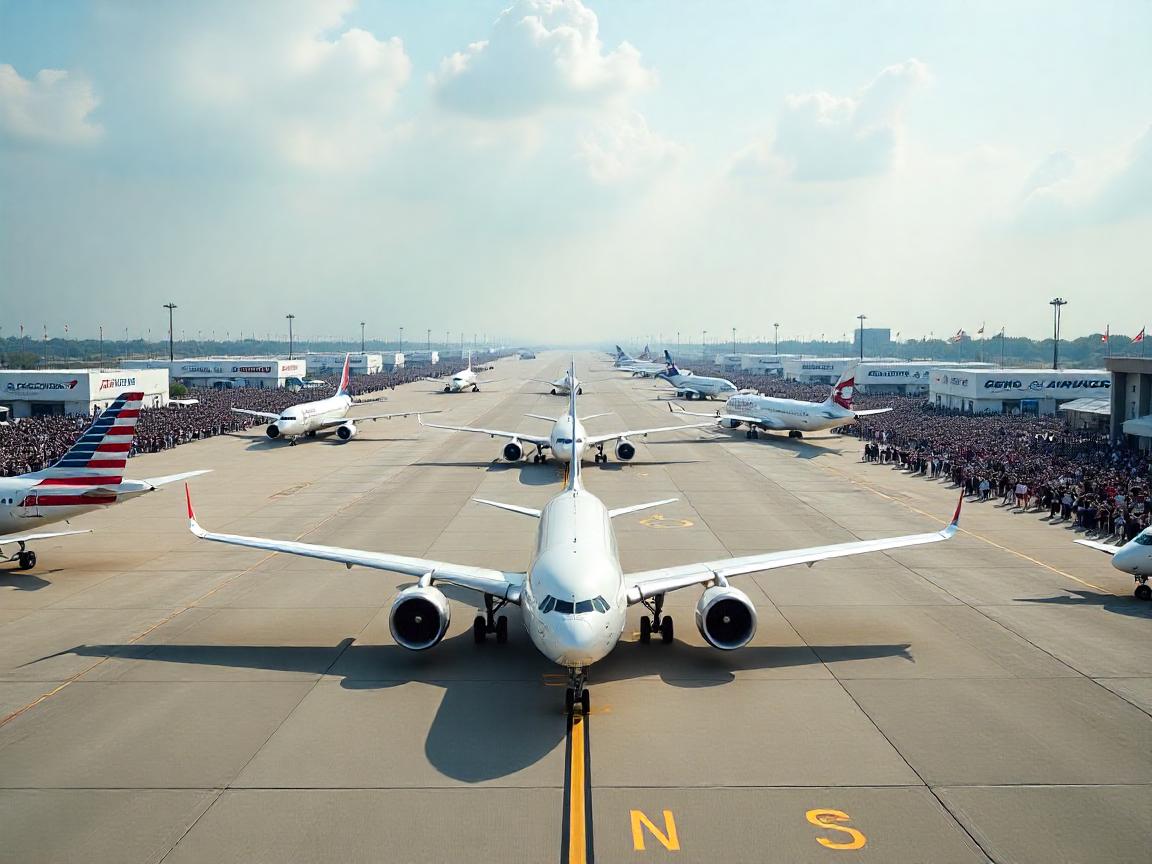Boeing And Airbus Aggressively Prepare To Revolutionize Global Aviation With Powerful Next Generation Aircraft Set To Dominate The Skies - Travel And Tour World
Monday, June 16, 2025

Boeing and Airbus are engaged in a fierce competition to transform global aviation through next generation aircraft full of advanced technology, highly efficient engines, and daring designs to capture surging global travel demand, fill fleet gaps, reduce emissions, and gain supremacy in a fast-changing airline market.
Two aerospace giants continue to dominate the global market for commercial jetliners. In the United States, Boeing stands as a long-established manufacturer, built over decades through multiple mergers of major aircraft companies. Despite ongoing challenges related to its 737 MAX program, the company remains one of America’s largest exporters and a critical part of the nation’s industrial landscape. Across the Atlantic, Airbus, although a newer competitor, has grown to become the leading manufacturer in the global commercial aviation sector.
The next significant entries into the global aircraft market are expected to be the Boeing 797 and the Airbus A390, following their respective naming traditions. These new aircraft will represent a major evolution in commercial aviation, with both manufacturers targeting different gaps and opportunities in the market. A closer examination of these two projects reveals the strategies and potential impacts each design may have on the industry.
Boeing’s planned 797 model is designed to address a longstanding void in its product lineup. Years ago, the company ended production of the Boeing 757, which had successfully served as a bridge between narrowbody and widebody jets. In response to industry demands for a replacement, Boeing began work on what was informally called the New Midsize Airplane (NMA), commonly referred to as the Boeing 797.
The objective behind the NMA is to create an aircraft capable of serving mid-range routes with improved economics and flexibility. Back in 2015, Boeing’s market research indicated that this segment was lucrative enough to warrant a new design. Development progressed as airlines around the world expressed interest in a mid-market, twin-engine airliner featuring an advanced elliptical fuselage cross-section.
Initial design concepts proposed two variants of the Boeing 797. The first version would accommodate around 225 passengers and offer a range of approximately 5,000 nautical miles. The second version would increase capacity to 275 seats with a slightly reduced range of 4,500 nautical miles. Market analysts projected demand for this type of aircraft to fall between 2,000 and 4,000 units, with Boeing’s internal forecasts leaning towards the higher end of this estimate.
The Boeing 797 is designed to generate significant economic benefits for operators. Its price point is projected to fall between \$65 million and \$75 million, making it an attractive investment for airlines seeking efficient mid-market solutions. According to industry assessments, the aircraft is expected to deliver more than 30 percent additional revenue compared to current narrowbodies, while reducing trip costs by around 40 percent compared compared to older widebody aircraft like the Boeing 767.
The aircraft is also set to feature a highly efficient engine. This advanced turbofan engine, reportedly developed by either GE Aviation or Pratt & Whitney, would deliver 50,000 pounds of thrust while incorporating cutting-edge technologies such as a bypass ratio of at least 10:1 and an overall pressure ratio exceeding 50:1 to maximize fuel economy.
In early 2020, however, Boeing placed the 797 program under review as the company refocused its attention on resolving the 737 MAX crisis. Brief discussions in 2021 suggested that a smaller variant of the aircraft might still enter development later in the decade. However, the project faced another delay in mid-2022 as progress on next-generation engine technology had not yet reached the necessary stage for development to continue.
As Boeing’s 797 project faces uncertainty, Airbus is steadily advancing its plans for its next major aircraft development. The European manufacturer’s upcoming aircraft is widely expected to carry the A390 designation, although some industry insiders have speculated that it might eventually be called the A360 to fit existing naming gaps.
Unlike Boeing’s mid-market approach, Airbus is developing a clean-sheet design that breaks away from previous models. Instead of simply scaling existing platforms up or down, this new aircraft will introduce several technological advances that reflect Airbus’s commitment to sustainability and innovation.
Currently, Airbus offers aircraft that serve nearly every passenger capacity segment, from the smaller A220 up to the long-haul A350-1000. The company is now focusing on developing a cutting-edge single-aisle aircraft intended to serve as the future replacement for its highly popular A320 series.
The new Airbus aircraft will introduce several pioneering features aimed at improving fuel efficiency and lowering environmental impact. Central to its design is the incorporation of an open-fan propulsion system, developed in partnership with CFM International. This advanced engine is expected to deliver around 20 percent better fuel efficiency compared to current engines, thanks to its larger bypass ratio and cutting-edge design.
The aircraft will also feature the “Wing of Tomorrow,” a longer, more aerodynamic wing with folding tips, allowing compatibility with existing airport gate configurations. This design aims to boost aerodynamic performance while fitting into current infrastructure without requiring expensive modifications.
Another key objective for the aircraft is full compatibility with 100 percent sustainable aviation fuel (SAF), whereas current models typically support only a 50 percent SAF blend. This capability positions the aircraft well for future regulatory requirements, particularly in regions with strict emissions policies, such as Europe.
The Airbus A390 is designed to take over the operational role currently filled by the A320 and Boeing 737 models in global airline fleets. It will handle domestic, transcontinental, and short-to-medium international routes, offering airlines maximum flexibility and operational efficiency.
With extended range capabilities, the aircraft is expected to enable more long-haul flights on thinner routes that were previously economically unviable. Its fuel-efficient engines and lower emissions profile will also allow operators to open new transatlantic routes with reduced environmental and financial risks.
The aircraft’s emphasis on sustainability and efficiency makes it particularly appealing to low-cost carriers, legacy airlines, and other operators seeking to future-proof their fleets against stricter carbon regulations.
The approaches taken by Airbus and Boeing illustrate contrasting philosophies in aircraft development. Boeing’s focus has been on filling a specific market gap with the NMA, offering a moderate-risk solution that builds on existing technologies to address a clear need in its lineup. However, its market size may be somewhat limited to carriers seeking to bridge specific capacity and range gaps.
In contrast, Airbus is taking a more ambitious path, betting heavily on next-generation technologies that could redefine aircraft efficiency and sustainability. This broader, more transformative vision could position Airbus as a leader in the future era of commercial aviation.
Both Boeing and Airbus are aiming to reshape global aviation with these upcoming aircraft, though their timelines, designs, and market priorities differ. While Boeing’s 797 faces delays and uncertainty, Airbus is steadily advancing its development program, with flight testing of its new technologies scheduled for later this decade.
The competition between Airbus and Boeing is underway to remake aviation’s future through game-changing next-generation aircraft to cater to booming demand, increase efficiency, and own the skies for generations to come.
Whichever manufacturer reaches the market first may set the tone for the next generation of commercial aviation. The coming years will reveal whether Boeing’s cautious approach or Airbus’s bold innovation proves to be the dominant strategy.












